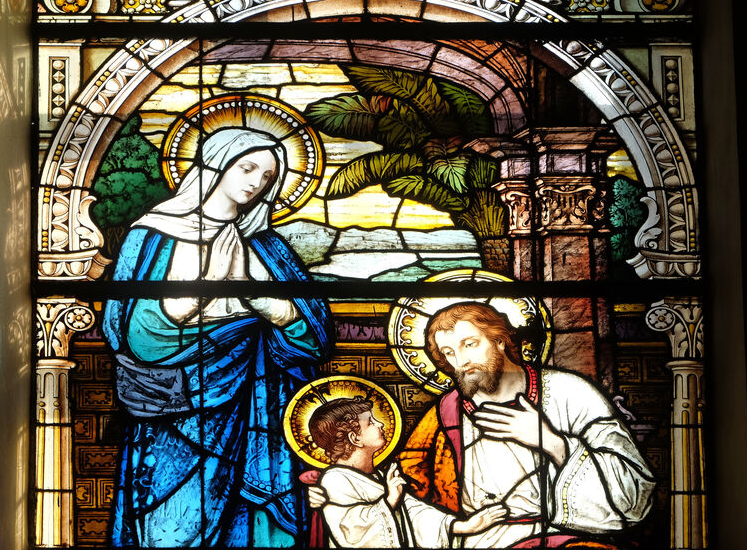
Stained Glass Origins:
While the exact origin of stained glass windows is unknown, glass production was a significant industry in ancient civilizations:
- Egypt and Rome: Ancient Egyptians were among the first to produce colored glass, with glass beads dating to around 2700 BC. The Romans expanded glassmaking techniques, producing vessels, mosaics, and rudimentary window panes. Roman window glass was intended more for insulation and security than for decoration, but the use of colored glass was established in the era.
- Early Middle Ages: The use of colored glass in windows can be traced to the 7th century in England. The oldest known surviving example of this art form is the 7th-century Benedict Biscop monastery in England, which commissioned French artisans to create the stained glass for its windows. However, the distinctively figured, storytelling stained glass we recognize today began to emerge in the 9th century, possibly influenced by the revival of minor arts like enamelwork under Charlemagne.
Medieval and Gothic climax
Stained glass reached its pinnacle in the 12th and 13th centuries, driven by advances in Gothic architecture and religious symbolism.
- Architectural innovations: The development of the rib vault and flying buttress allowed cathedrals to have thinner walls and larger window openings. Stained glass became a key element of the architecture, filling vast expanses with mystical, colored light.
- Religious storytelling: As the majority of the population was illiterate, stained glass served as a visual Bible. The windows depicted religious narratives and the lives of saints, serving as a powerful teaching tool and inspiring a divine atmosphere.
- Major works: Notable examples include the 12th-century windows of Augsburg Cathedral in Germany, some of the oldest intact stained glass, and the extensive cycles at France's Chartres and Sainte-Chapelle cathedrals.
Renaissance, Reformation, and decline
The 15th through 18th centuries saw a period of decline for stained glass.
- Shifting styles: During the Renaissance, new architectural tastes favored other mediums, and stained glass began to incorporate techniques more akin to painting, with more detailed figures and naturalistic scenes.
- Protestant Reformation: The Reformation led to the destruction of many medieval windows, particularly in England, due to new religious norms that rejected elaborate church ornamentation. By the mid-17th century, stained glass had become a rare art form.
19th-century revival and Art Nouveau
A renewed interest in medieval styles spurred a massive revival of stained glass in the 19th century.
- Gothic Revival: Influenced by the Gothic Revival movement, architects and artists began creating new stained glass for a growing number of churches and public buildings. Designers like William Morris helped popularize the medium for secular use in private homes.
- Louis Comfort Tiffany and Art Nouveau: At the turn of the 20th century, Art Nouveau embraced stained glass as a form of artistic expression. Louis Comfort Tiffany pioneered a new style using opalescent, iridescent glass and nature-inspired motifs. His designs, including the iconic Tiffany lamps, brought stained glass into mainstream interior decoration.
Modern and contemporary stained glass
After a brief decline, stained glass has reemerged with new and abstract styles.
- Mid-century abstraction: Following World War II, modern artists and architects began to explore more abstract and expressionistic styles in glass. Notable examples include Henri Matisse's designs for the Dominican Chapel of the Rosary and Marc Chagall's synagogue windows.
- New technologies and applications: Contemporary artists and hobbyists continue to innovate with new techniques and applications. Today, stained glass is used not only in windows but also in lamps, sculptures, decorative panels, and other forms of art and interior design.